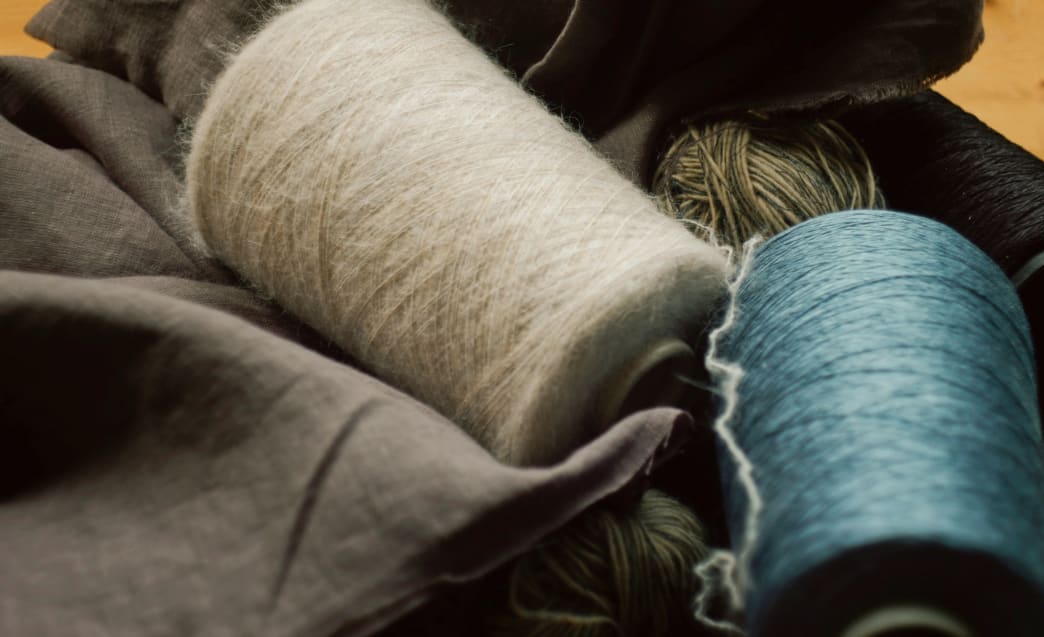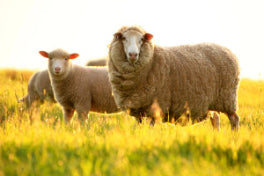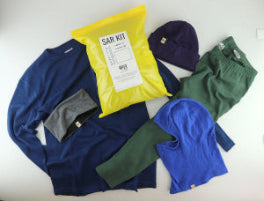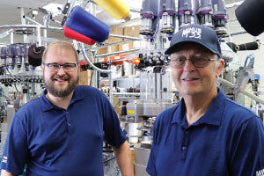Through the millennia, wool has been unmatched by other textiles in terms of its collection of qualities. What makes wool such a miraculous material? Anyone who wears wool knows firsthand that it keeps you warm in chilly temperatures and cool in hot weather. You’ve probably also noticed how wool garments from companies such as Minus33 wick away moisture and stay odor-free. But how many wool lovers know the science behind this incredible fabric? Here are all the answers to the big questions you have about the inner workings of wool, giving you full confidence when choosing your clothes and accessories.
How is wool clothing so warm while still being lightweight?
One of the main reasons wool keeps you warm is that it doesn’t pull heat away from your body. In other words, wool is a poor conductor of heat. This might sound odd, but it’s actually a good thing. Conduction is the primary way that heat transfers from one material to another, and something that you witness every day: like a skillet conducting heat from a stovetop. Due to the physical properties of wool, it doesn’t absorb the heat that your body works so hard to produce when it’s cold outside. So you stay warm instead of your clothing. At the same time, wool fabric is a power insulator. Humans have recognized the insulating abilities of sheep’s wool for more than 10,000 years. The cellular and chemical structure of individual wool fibers makes this magic happen. Because wool fibers have natural kinks and bends, they trap air to keep your body warm. Wool is so well-regarded for its heat-trapping powers that it’s even used in homes and buildings as sustainable, recyclable insulation.
Does merino wool actually generate heat?

Yes. Merino wool is one of the rare fabrics that can generate heat while it dries. When a wool garment gets wet, water is adsorbed, meaning it gets trapped in wool’s porous fibers. Inside the fibers, the hydrogen bonds in water break down. This creates a chemical reaction that generates heat. Experiments have found through this process, one kilogram of merino wool can produce as much heat over eight hours as an electric blanket.
Why does wool handle water so well?
Wool’s natural water-resistance and ability to wick away moisture are among its most impressive qualities, and, to many, its biggest enigma. The main thing to know is that wool adsorbs (yes, adsorbs not absorbs, that’s different) moisture. Adsorption means that water molecules get trapped in the naturally porous fibers of the fabric versus absorption where water molecules permeate the fabric and are wet to the touch. For wool, because the water is trapped, your garments don’t feel especially wet against your skin even when they’re soaked. But what happens to that moisture next?
Learn More About Why Choosing Merino Wool Clothing is Beneficial>>
Remember wool’s incredible ability to generate heat? Inside the fibers, water condenses and releases heat. Meanwhile, the outer layers of individual wool fibers shed water and release moisture into the air as vapor. The mechanisms behind this natural process of water adsorption and evaporation can get pretty complicated. It all happens thanks to the combination of wool’s cellular structure, biophysical qualities, and chemical properties. Overall, the important thing for you to know is this: your wool garments will keep you dry and comfortable by pulling moisture away from your skin and allowing the moisture to evaporate quickly.
So, how much water can merino wool really adsorb?

Wool has been shown to adsorb 30 percent of its weight in water. That’s a lot of water! Even after adsorbing that much moisture, wool fabrics still won’t feel clammy or wet to the touch. This fantastic quality of wool clothing gives you extra assurance that you’ll stay comfortable no matter what conditions you encounter—rain, snow, falling into a puddle, you name it. The heat that wool generates while it dries will insulate your body, keeping you warm even while your layers are wet. This incredible feature of wool can prevent or delay hypothermia in extreme conditions.
Cotton, on the other hand…
Cotton reacts to moisture very differently than wool. Cotton fabrics soak up as much moisture as possible, and the fibers remain wet on the inside and the outside for much longer than wool. The wet cotton clothing will conduct, or pull, warmth away from your body, unlike wool.
Is wool fire-resistant?
Yes. Wool textiles are renowned for their fire-resistance and self-extinguishing capabilities. Due to the structure and chemical make-up of wool fibers, they don’t catch fire readily. Simply put, wool fibers require more oxygen than is available in the environment to burn. Wool textiles have a high ignition temperature around 570-600° C.
Read About How to Care for Your Merino Wool Products>>
Even when a strong fire contacts wool, the material doesn’t typically support flames. Instead, it smolders for a generally short amount of time before self-extinguishing. Unlike synthetic fabrics such as polyester, wool doesn’t melt, drip, or stick to the skin when it burns. Similarly, if it does catch fire, wool won’t emit toxic gas. Plus, it will produce less smoke than other fabrics. All of these fire-safe qualities stem from the fact that pure wool is made up of 100% natural proteins.
How does wool resist odor?
When you’re in the backcountry for days without access to a shower, you’ll appreciate that wool clothes resist the build-up of odors. As wool wicks sweat from the body, it inherently rejects bacteria, which is what causes odor as well as infections like foot fungus. When you wear merino wool socks and clothing, you can use them repeatedly over a long period and work up a sweat without worrying about odors or bacteria collecting. You won’t need to wash wool garments as frequently as synthetic clothes, and you can freshen up wool clothes by airing them out. With its ability to fight odors and keep you warm and dry, wool truly is a remarkable material. Fortunately, companies like Minus33 have expanded their wool offerings. By using soft merino wool, companies are not only producing sweaters and other mid-layer pieces but also pieces that feel soft against the skin, like underwear and T-shirts. Over the past few decades, product wizards have created remarkable hi-tech clothing out of synthetic materials. Still, few of these things can match the science and performance of all-natural wool.
If you liked this article, you should also read:
- Wool vs. Merino Wool: 6 Notable Differences and Why You Should Care
- 7 Reasons Why You Want Wool for Working Out
- Quiz: How Well Would You Survive in the Wild?
Written by Jenna Herzog for Matcha in partnership with Minus33. Featured image provided by Sam Carter






